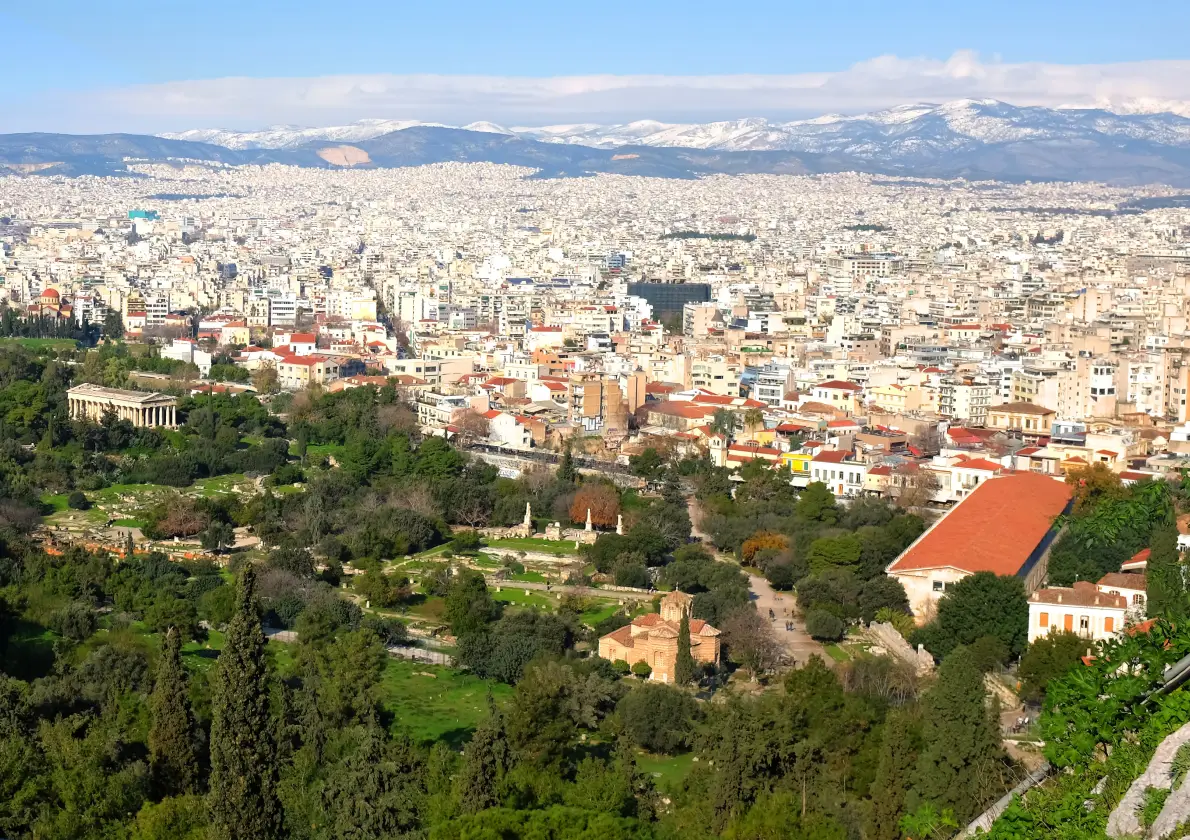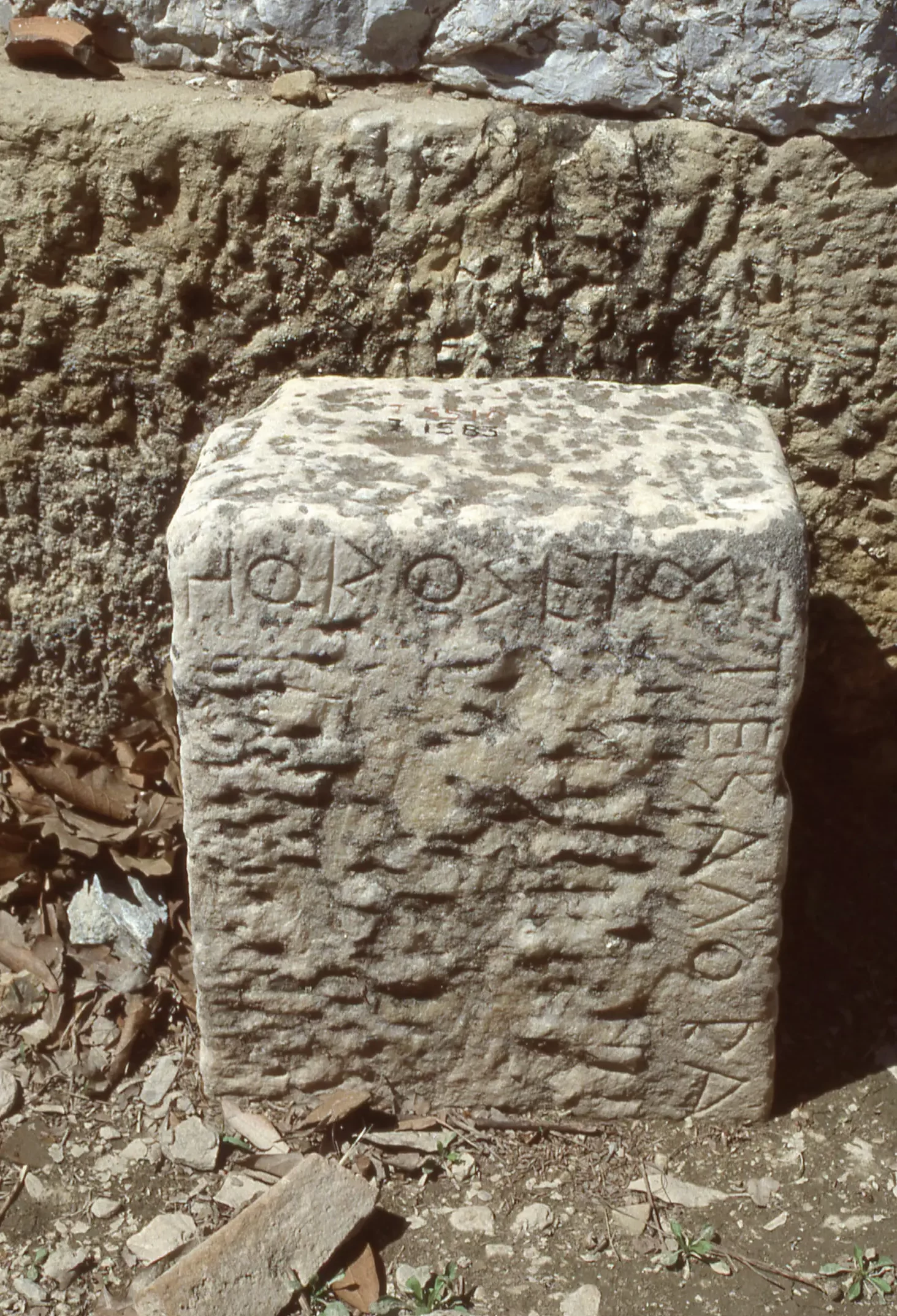ABOUT DEVA
The Digital Epigraphy & Visualization at the Athenian Agora (DEVA) project is located in the heart of Athens, one of the most famous cities from antiquity.
HISTORY OF THE AGORA
The Agora was the political and commercial hub of ancient Athens. Surrounded by artisans’ workshops, shrines, and houses, it began to grow into a dedicated civic space more than 2500 years ago. After the Agora was formally established as public land, it developed into the vibrant political centre of the Classical Athenian democracy. Athens lost its independence in the 4th century BCE, but it remained an important symbol of Greek art, architecture, and philosophy for centuries to come. Athens enjoyed the patronage of wealthy elites from the Hellenistic era to its absorption into the Roman empire (ca. 300 BCE to 250 CE), and the Agora continued to serve as the municipal centre.
Athens was less fortunate under the later Roman empire. A Germanic tribe known as the Herulians sacked the city in 267, and Athens dwindled in importance and population over the coming millennium. As the city contracted, the remaining residents built houses inside the abandoned Agora, often using ancient stones as building materials. Athens was a comparatively minor center during the Byzantine empire, whose capital in Constantinople drew people and commerce to the north. The Ottomans conquered Constantinople in 1453 and ruled most of Greece for nearly 400 years.

Photo by Federico Abis from Pexels
EXCAVATIONS AT THE AGORA
The modern Greek state established in 1827 was keenly interested in reconnecting with its Classical past, but many of the famous sites described in the surviving ancient texts had vanished. The ancient Agora had been buried under metres of soil and debris, and through the 20th century it was a lively urban zone of houses and churches. In 1931, the American School of Classical Studies at Athens (ASCSA) was granted a longterm permit by the Greek state to excavate the site. The ASCSA acquired the land, demolished modern buildings, and started a nearly continuous program of excavations that continue today. Almost all of the civic area has now been exposed and developed as a major historical and archaeological site for visitors. The finds attest to human activity at the site spanning the last 5,000 years. Today, most are stored in the Stoa of Attalos – a major Hellenistic building that was reconstructed in the 1950s to serve both as a public museum and a storeroom for its millions of catalogued and uncatalogued artifacts. Visit the ASCSA to learn more about the project.

Photo by Min Zhou (CC BY 2.0)
EPIGRAPHY AT THE AGORA
The ancient Greeks, and the Athenians in particular, were fond of carving important statements into stone so that they would last. Some types of these stone inscriptions are probably familiar to us in the present day, such as grave epitaphs or dedications on buildings. But the ancient Athenians also wrote official texts on stone that we have replaced with paper or digital records today. They routinely carved on stone things like new laws, religious rules, honorific decrees, and accounts of how public funds had been spent. The most popular format was a tall, freestanding slab of marble bearing the text – known as a stele. Every year, texts were being cut and set up in the Agora, keeping up with the busy pace of the government.
The Agora must have been increasingly crowded with steles and other forms of text accumulated over the centuries. Some were eventually decommissioned in order to make room for new inscriptions, and others were destroyed in sacks or accidents. The stone slabs were useful building material and were reused in secondary contexts. Many were built into drains, threshold slabs for houses, and other functions that had little to do with their original purpose.
The ASCSA excavations discovered huge numbers of inscriptions – more than 8,000 (and counting!) to date. Many others were destroyed, and those that survive are usually fragmentary, scraped, and quite difficult to read in some places. Epigraphists have been curating, studying, and publishing these damaged texts, trying their best to understand what was originally written on them.
WHAT IS DEVA?
Digital Epigraphy & Visualization at the Athenian Agora – aka DEVA – builds on this long and rich history of epigraphical research at the Agora. We are focusing on a selection of stones which are significant to Athenian history but are challenging to read. Most are pieces that epigraphists are still debating today, though a few are unpublished. DEVA is creating high-quality 3D scans of the surfaces and then visualizing the results with special viewing modes that can clarify incisions. Although we are working primarily with features that are visible to the naked eye, DEVA imagery has already helped discover parts of these texts that had been missed by the professionals even after many years of careful study.
